Valkenburg squadrons
An overview of all aircraft squadrons that served at Valkenburg after the Second World War. The years indicate in which period the squadrons were stationed at Valkenburg.
Nr. 1 Transportvliegtuigen Afdeling (1946 – 1957)
The first Dutch unit to be placed in post-war Valkenburg was the Nr. 1 Transport aircraft Department (TransVa). This was a unit of the Luchtstrijdkrachten (LSK), the predecessor of the Royal Netherlands Air Force. When the airport was handed over to the Marineluchtvaartdienst in October 1947, the TransVa remained as a guest unit. The division flew the following aircraft types here: Lockheed 12A, De Havilland DH-89B Dominie, Percival Proctor, Taylorcraft Auster and Avro Anson. In September 1952, the TransVa received the first of 16 C-47s (Dakotas/Skytrains). The TransVa was renamed 334 (Transport)squadron on December 1, 1952 and moved to Ypenburg Air Base in December 1957.
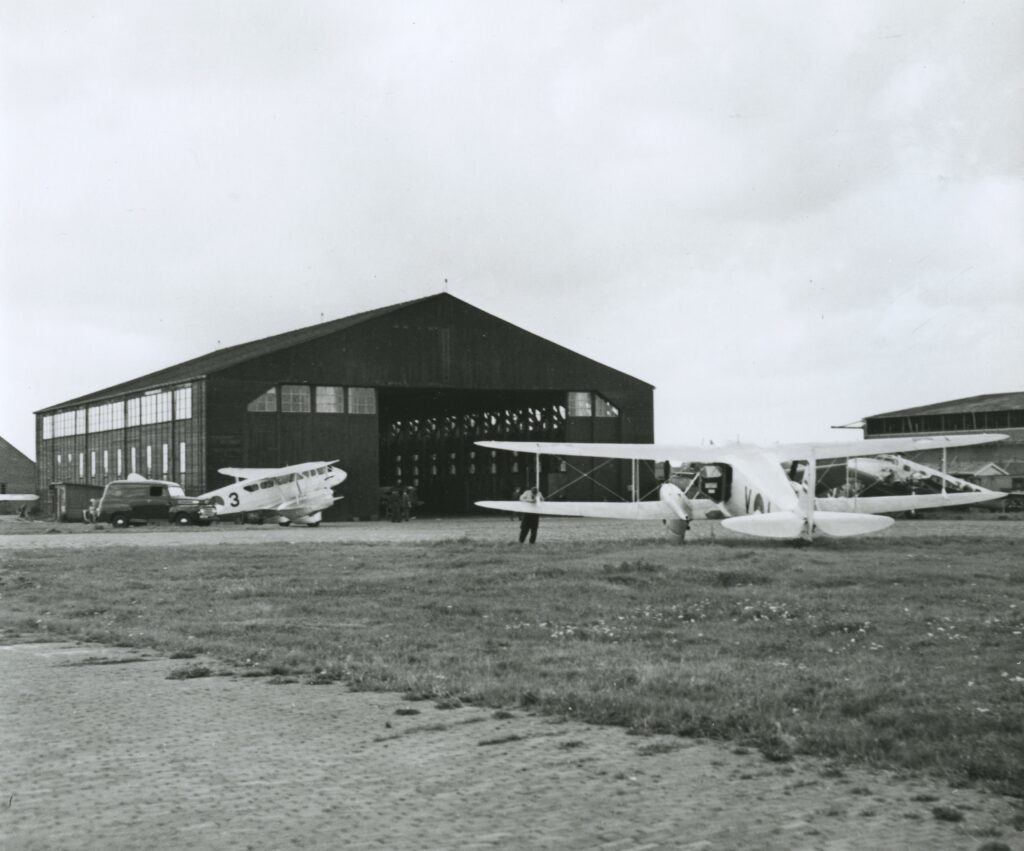
Vliegtuigsquadron 1 (1949)
VSQ 1 was only placed at Valkenburg for a very short time. It was formed here on March 22, 1949 and already disbanded on October 17 of that year. The staff left permanently for the Dutch Antilles. Here it was revived in October 1950 and equipped with 12 Fairey Firefly Mk.1s. In the years that followed, VSQ 1 flew with Grumman TBM-3 Avengers and finally with Grumman S-2A Trackers.
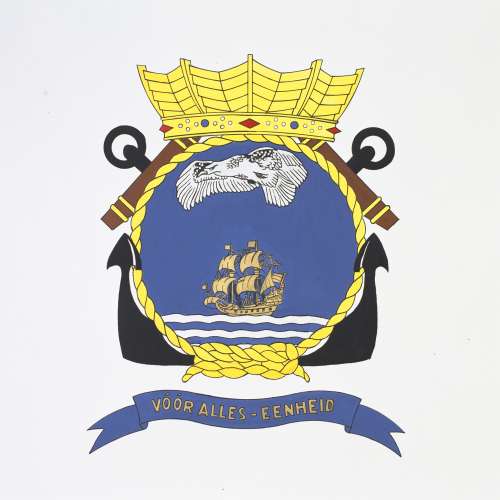
Vliegtuigsquadron 2 (1949 – 1996)
A squadron with a whimsical history. It was founded on October 17, 1949 in Valkenburg. In the following year, the Fairey Firefly Mk.1s boarded the aircraft carrier Karel Doorman for a trip to the Dutch Antilles. Upon their return, the squadron was disbanded, and reconstituted again in October 1951, still with Firefly’s. In the summer of 1954, VSQ received 2 Grumman TBM-3 Avengers for the anti-submarine role. The squadron was inactive for most of 1961. In 1962 the Grumman S-2A Trackers entered service with VSQ 2. The squadron’s primary task was to train crews for the other operational squadrons. From 1970 it no longer had its own aircraft, but borrowed them from the other squadrons at Valkenburg. This remained so until the P-3 Orion era and its final disbandment on September 1, 1996. The training duty then passed to VSQ 321.
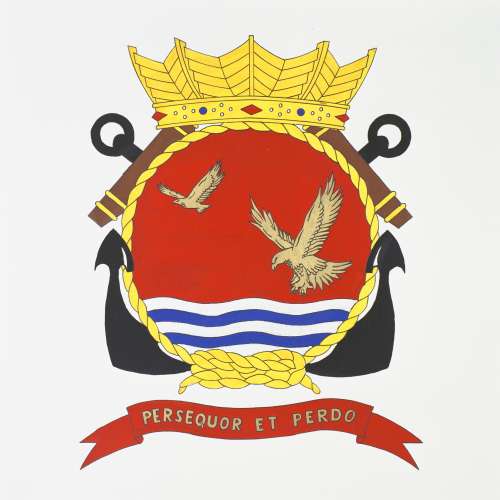
Vliegtuigsquadron 3 (1952 – 1961)
This squadron was established on March 10, 1952 and served as a reserve squadron for the longest period of its existence. The squadron flew Fairey Firefly’s, Hawker Seafury’s and Grumman TBM-3 Avengers. In 1958 it was given an additional task: training pilots for VSQ 860, which flew Hawker Seahawk fighter jets. VSQ 3 received Gloster Meteor T-7 jet trainers from the Netherlands Air Force for this task. That was short-lived, because in July 1961 the squadron was disbanded and the Meteors were scrapped. The Seahawks went to VSQ 860.
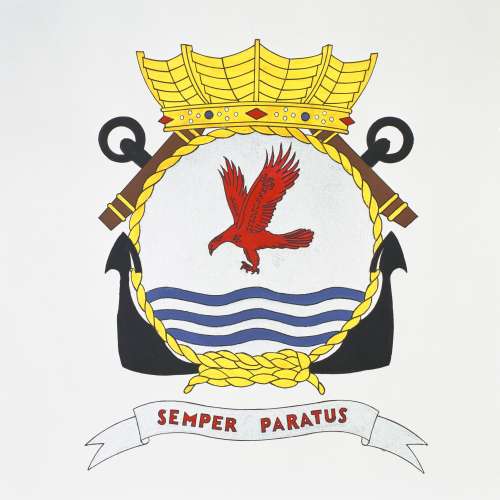
Vliegtuigsquadron 4 (1947 – 1971)
VSQ 4 was founded at the same time as VSQ 2 on October 17, 1947. The first aircraft of this squadron was the Fairey Firefly Mk.1. As was the case with other MLD squadrons, Valkenburg was only home when the aircraft carrier Hr.Ms. Karel Doorman was in the harbor. In the following years, the Hawker Seafury’s and Grumman TBM-3 Avengers entered service. After 1960, VSQ 4 was tasked with training aircrew and ground personnel. That year, the Grumman S-2A Trackers entered service. When the Karel Doorman was taken out of service in 1969, VSQ 4 definitively became a land based squadron at Valkenburg. Not long, because the squadron was withdrawn from service on May 27, 1971.
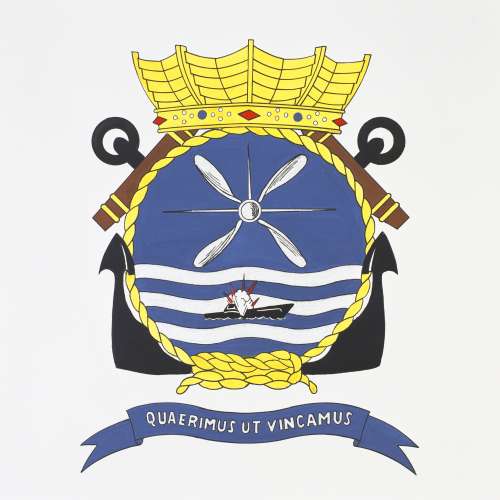
Vliegtuigsquadron 5 (1951 – 1974)
When squadron 320 received Lockheed Harpoons in 1951, the old North American B-25 Mitchells were transferred to a new squadron: Vliegtuigsquadron 5. The task was mainly search and rescue (SAR). The squadron also got some Supermarine Sea Otter amphibians, Taylorcraft Austers and Airspeed Oxfords. In 1962 the squadron received Beechcraft TC-45 Navigators and the rescue aircraft were transferred to VSQ 8. In the years that followed, P2V-7B Neptunes and a Sikorsky S-55 were also temporarily in use. The Navigators were the primary aircraft used for training observers and anti-submarine crews, and enhancing the flying experience of certified pilots. VSQ 5 was the jack of all trades at the MLD. It was disbanded on March 1, 1974, unfortunately all five remaining Navigators were scrapped.
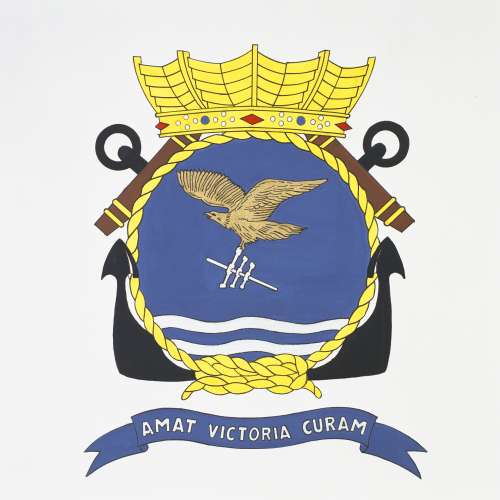
Vliegtuigsquadron 7 (1962 – 1974)
VSQ 7 was put into service at Valkenburg on 15 October 1962. It had previously served, flying Catalinas, at Naval Air Base Morokrembangan in the former Dutch East Indies. At the MVKV the squadron received Agusta Bell 204B helicopters with the task of search & rescue and transport. The helicopters moved to MVK De Kooy in 1974.
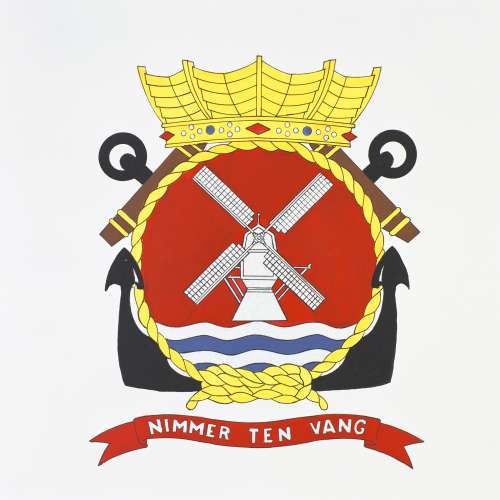
Vliegtuigsquadron 8 (1952 – 1968)
Like VSQ 7, VSQ 8 had already served in ‘the East’ for a short time. VSQ 8 flew C-47 Dakotas to Biak in Dutch New Guinea in 1950. On March 10, 1952, the squadron was reactivated at Valkenburg and took over the rescue task and the aircraft from VSQ 5. These included Supermarine Sea Otter amphibians. Added to this was the only helicopter in the Netherlands at that time: a Sikorsky S-51. During the flood disaster in February 1953, the squadron saved countless lives.
At the end of 1953, Lockheed received PV-2 Harpoons, which had already been replaced a year ago by two Catalina amphibious aircraft. In 1957 VSQ 8 received three Sikorsky S-55 helicopters. Three Martin PBM-5 Mariners who were briefly present at Valkenburg also came under the care of VSQ 8. The first five of a total of 12 Sikorsky S-58s arrived at VSQ 8 in April and May 1960. The helicopters were transferred to VSQ 7 in March 1963, after which VSQ 8 was withdrawn from service.
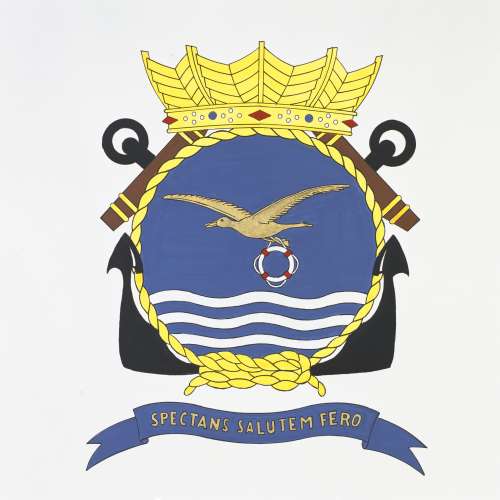
Vliegtuigsquadron 320 (1949 – 2005)
VSQ 320 and 321 were the oldest aircraft squadrons in the Netherlands. Both were established at Pembroke Dock (Wales) on 1 June 1940 and assigned to the Coastal Command of the Royal Air Force (RAF). 320 (Dutch Naval Air Service) Squadron flew Fokker seaplanes, Lockheed Hudsons and eventually North American B-25 Mitchells during the war years. In 1946 the squadron was disbanded, to be re-established on March 22, 1949 at Valkenburg. Here it again started flying with B-25s, but also with Supermarine Sea Otters, Airspeed Oxfords and Taylorcraft Austers. The tasks: search & rescue and submarine countermeasures.
At the end of 1951, the old bombers were exchanged for Lockheed PV-2 Harpoons. These only remained in service for a short time, as they made way for 12 P2V-5 Neptunes (SP-2E) 2 years later. In 1960 the old Neptunes were sold to Portugal and Grumman S-2A Trackers took their place. In 1963 the more modern P2V-7 (SP-2H) Neptunes entered service. These served until July 22, 1982, when the first four Lockheed P-3C Orions were delivered. Many missions have been carried out worldwide with the Orion. Aircraft squadron 320 was disbanded on January 14, 2005.
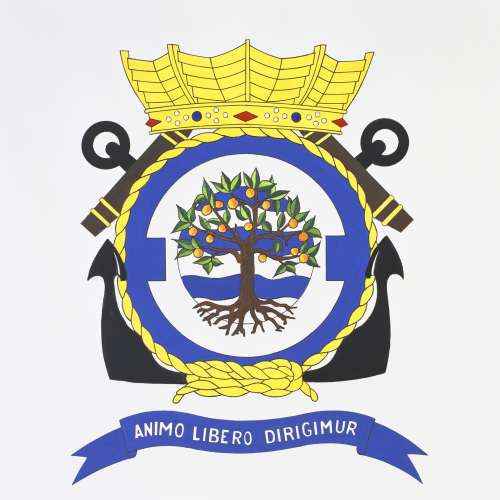
Vliegtuigsquadron 321 (1969 – 2005)
Like VSQ 320, VSQ 321 was founded in Wales on June 1, 1940. The first aircraft were Avro Ansons, with which the squadron made patrol flights over the Irish Sea. They were soon replaced by the more capable Lockheed Hudsons and the squadron was amalgamated with 320. After a short hiatus, VSQ 321 departed for ‘the East’ in July 1942, to China Bay in Ceylon (now Sri Lanka). There it operated PBY-5 Catalinas and later Consolidated B-24 Liberators. After the war, 321 remained in that region, in the Dutch East Indies and New Guinea. Only in 1962 did VSQ 321 come to the Netherlands with her brand new P2V-7B Neptunes. However, the squadron was immediately disbanded and only reactivated in June 1969 to fly the newly purchased Breguet Atlantics. After three accidents, this type of aircraft was taken out of service early in 1984 and VSQ 321 started flying the Lockheed P-3C Orion. On September 1, 1996, it took over the training duties of the decommissioned VSQ 2. And like Squadron 320, 321 was disbanded on January 14, 2005.
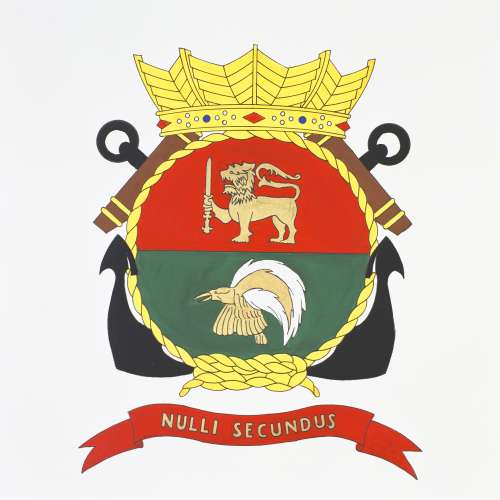
Vliegtuigsquadron 860 (1950 – 1964)
In the town of Donibristle in Scotland, Aircraft Squadron 860 was established on 15 June 1943. It was given the Fairey Swordfish, a biplane torpedo aircraft suitable for operations from aircraft carriers. After the Second World War, in 1946, VSQ 860 left with Fairey Firefly Mk.1s for the Dutch East Indies. In July 1950, 860 came to Valkenburg, equipped with the Hawker Seafury. After a short pause in 1956, the squadron received Hawker Seahawks in September 1957. With these graceful fighter jets 860 flew alternately from Valkenburg and the aircraft carrier Hr.Ms. Karel Doorman. After 1960 the jets stayed at Valkenburg and there was even a real demonstration team for a short time: the Sealords. On October 30, 1964, the curtain fell for the Seahawks, which were scrapped at Valkenburg. In 1966 the squadron moved to airfield De Kooy, where it was equipped with the Westland Wasp helicopter.
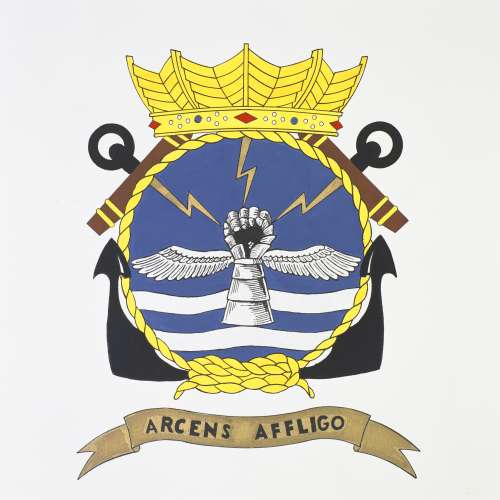
Vliegtuigsquadron 861 (1947 – 1949)
This squadron existed for a very short time. It was established in England on June 16, 1946 and received a number of Fairey Firefly Mk.1s. They were gradually flown to Valkenburg, where 861 was disbanded on 1 July 1949. The aircraft went to VSQ 4. The squadron existed mainly on paper and never received a squadron emblem.


